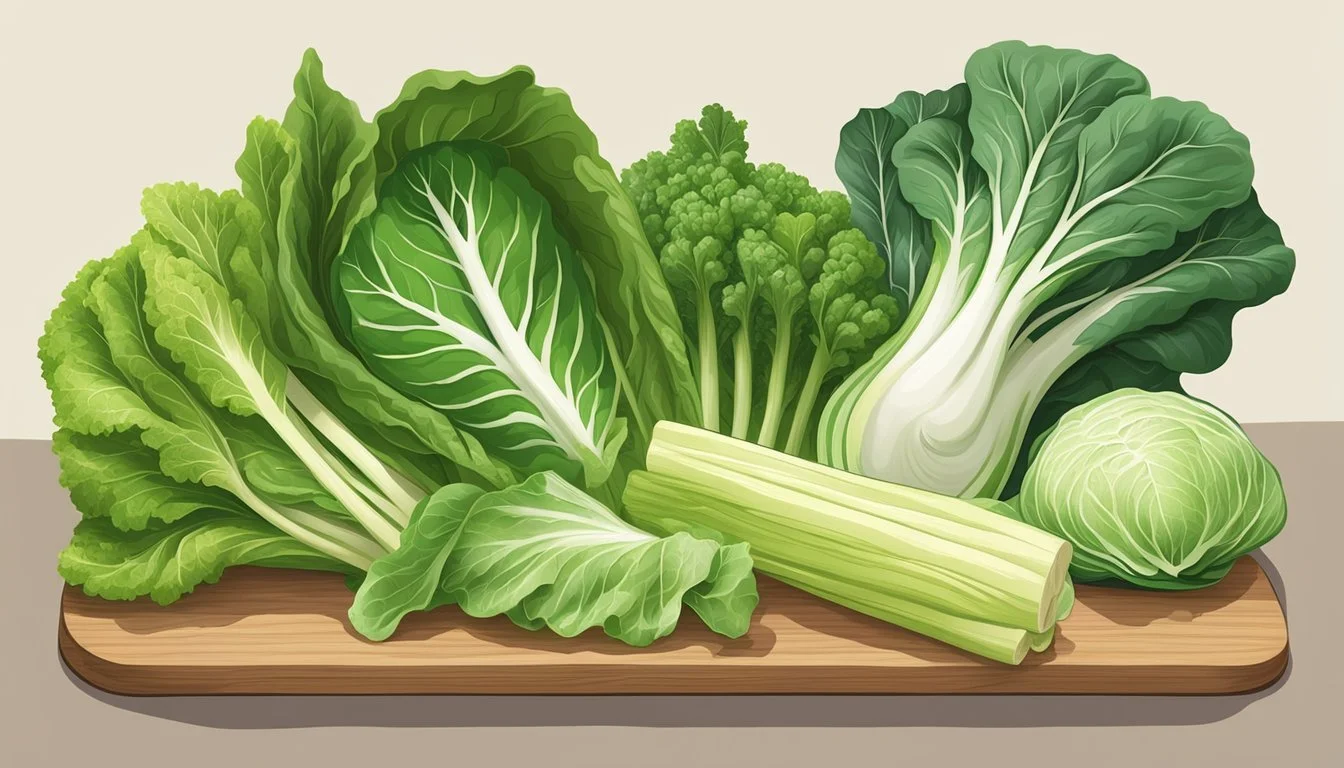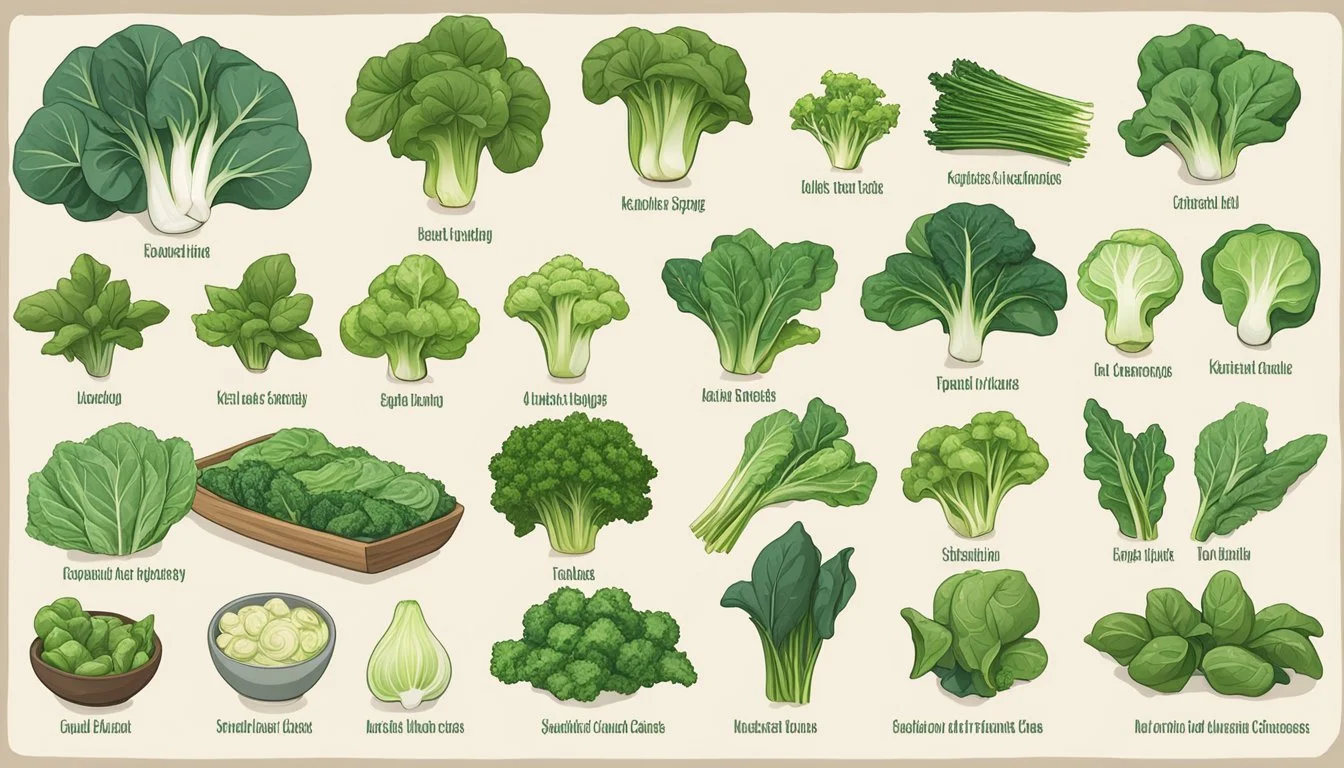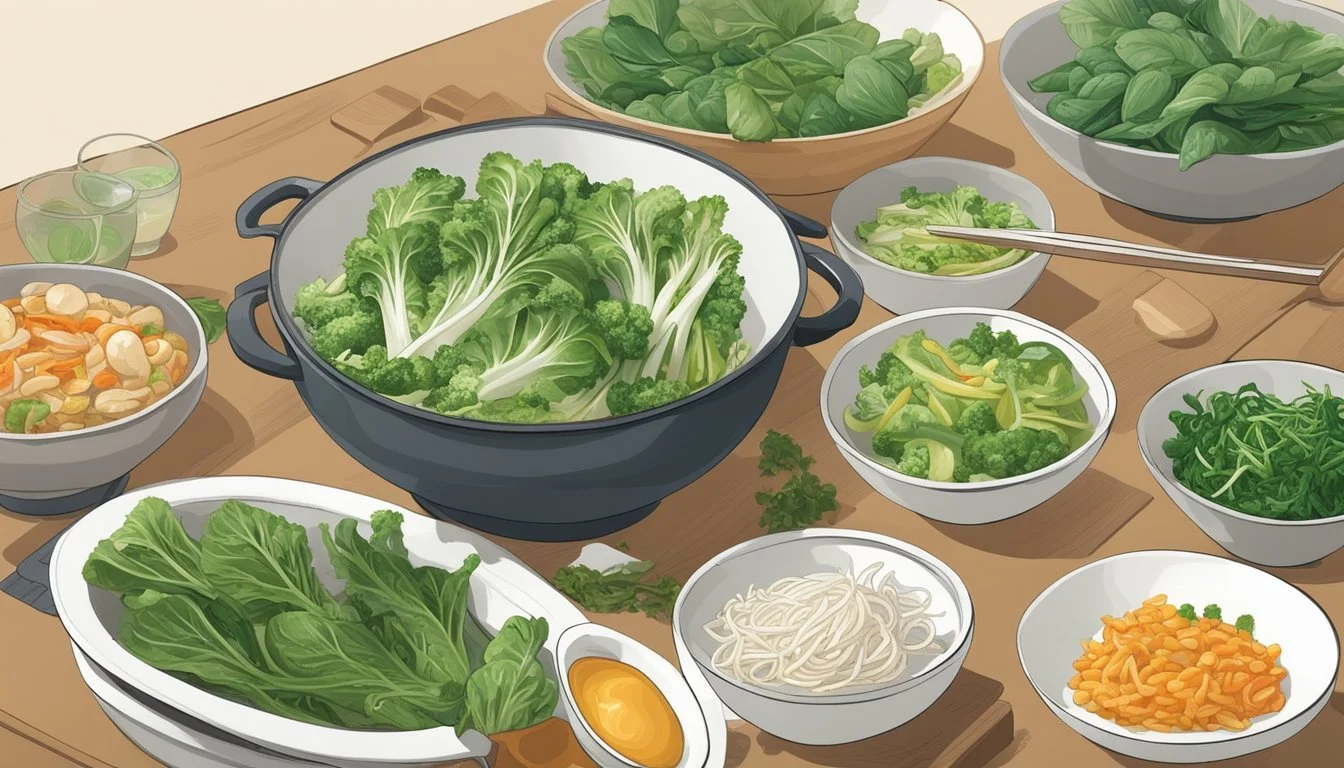Gai Choy Substitutes
Top Alternatives and How to Use Them
For those who love cooking Asian dishes, Gai choy, also known as Chinese mustard greens, adds a bold and peppery flavor to various recipes. However, there are times when this unique vegetable may not be available. Fortunately, there are several effective substitutes that can replicate its taste and texture.
An excellent alternative to Gai choy is the versatile collard greens. These greens have a similar crunch and can seamlessly blend into stir-fries and soups. Other viable substitutes include napa cabbage and Swiss chard, both of which offer comparable textures and flavors that complement Asian cuisine.
For those seeking a more intense flavor, Gai lan or Chinese broccoli is a solid option. It brings a slightly bitter yet sweet flavor that enhances dishes just as well as Gai choy. Whether you’re looking for a familiar taste or something that brings a new dimension to your diet, these substitutes are sure to keep your recipes delicious and satisfying.
Understanding Gai Choy
Gai Choy, also known as Chinese mustard greens, is a leafy green vegetable with a distinct peppery and bitter taste. Its robust flavor and nutritional benefits make it a favored choice in various culinary applications, especially within Asian cuisine.
Characteristics of Gai Choy
Gai Choy features dark green leaves supported by thick stems. The leaves are elongated and slightly crinkled, providing a tender and crunchy texture. This vegetable is noted for its peppery and bitter taste, which can add a punch of flavor to dishes. Gai Choy gets its name from its mustard family origins, contributing to its characteristic spiciness.
The contrasting textures of tender leaves and crunchy stems make it versatile for different cooking methods. This leafy green is hardy and retains its texture well, even when cooked.
Culinary Uses
Gai Choy is prevalent in Asian cuisine, often used in stir-fries and soups. Its strong flavor holds up well in hearty dishes, where it complements other robust ingredients. When used in stir-fries, Gai Choy adds a satisfying crunch and a spicy, bitter note that balances the flavors of soy sauce, garlic, and ginger.
In soups, it adds depth and a bright green color that enhances the dish's visual appeal. Gai Choy can also be pickled or used fresh in salads, though its strong flavor is usually mellowed by cooking.
Health Benefits
Gai Choy is rich in essential nutrients, making it a healthy addition to any diet. It contains significant amounts of vitamins A, C, and K, which are crucial for immune function, skin health, and blood clotting, respectively. This leafy green is also a good source of fiber, aiding digestion and promoting gut health.
In terms of minerals, Gai Choy provides calcium and iron, which support bone health and prevent anemia. Additionally, it contains antioxidants that help protect the body from free radicals and oxidative stress. Incorporating Gai Choy into meals can support overall health and provide a flavorful boost to various dishes.
Common Substitutes for Gai Choy
When Gai Choy is unavailable, several alternatives can effectively stand in with comparable flavor, texture, and culinary versatility. Below are key vegetables that serve as excellent substitutes.
Bok Choy and Varieties
Bok Choy, including varieties like baby bok choy and Shanghai bok choy, is an ideal substitute. Regular bok choy offers tender, dark green leaves and crisp white stems. Its mild, slightly sweet taste and crunchy texture make it suitable for stir-fries and soups. Baby bok choy, with its smaller size, is often more tender and has a delicate flavor, perfect for quick sautés and fresh salads.
Napa Cabbage and Chinese Broccoli
Napa Cabbage, also known as Chinese cabbage, provides tender, pale green leaves and a mild taste that works well in various dishes. Its subtly sweet flavor suits soups, stir-fries, and wraps. Chinese Broccoli (Gai Lan) has thick, crunchy stems and leafy tops with a slightly bitter taste, enhancing stir-fries with its robust flavor. Both are versatile and commonly used in Asian cuisine.
Other Leafy Greens
Swiss Chard and Spinach are additional options. Swiss chard's tender leaves and slightly bitter stems mimic the texture of Gai Choy, making it suitable for soups and sautés. Spinach, particularly baby spinach, offers mild flavor and is good for quick cooking. Collard Greens and Kale provide robust taste and hearty texture, suitable for longer cooking methods. Tatsoi and Chinese Mustard Greens (yu choy) can also be used for a bolder taste.
Considerations When Choosing Substitutes
When selecting a substitute for gai choy, it's important to examine several factors such as flavor profiles, texture and cooking time, and nutritional aspects.
Flavor Profiles
Substitutes for gai choy should have a comparable flavor profile. Gai choy, also known as Chinese mustard greens, possesses a distinct slightly bitter taste that stands out in dishes.
For those who enjoy a stronger bitter note, dandelion greens or turnip greens can be suitable replacements. If a more mild flavor is desired, bok choy and Swiss chard offer a delicate, slightly sweet taste while maintaining a hint of bitterness. The choice depends on whether the dish calls for matching or contrasting flavors.
Texture and Cooking Time
The texture and cooking time of the substitute can significantly alter the final dish. Gai choy has a crunchy texture with tender leaves, which must be considered when choosing substitutes.
Bok choy offers a similar crunchy texture and has tender, crispy stems that hold up well in cooking. Napa cabbage is another alternative, with its crispiness making it a suitable candidate. Spinach can be used in dishes where a softer texture is acceptable, but it cooks faster and wilts more quickly. Adapting cooking times to ensure all ingredients reach the desired texture at the same time is crucial.
Nutritional Aspect
Nutritional content is essential when selecting substitutes for gai choy, which is rich in vitamins and minerals. Gai choy is a considerable source of vitamin A, vitamin C, and several minerals such as calcium and potassium.
Swiss chard matches well in terms of vitamins and adds fiber to the diet, while Napa cabbage and bok choy also offer substantial nutritional value with fewer calories. Carefully consider these aspects to maintain the nutritional balance in your dishes. Being mindful of dietary requirements and health goals can guide the best choice for a suitable substitute.
How to Store and Prepare Substitutes
When storing and preparing substitutes for gai choy, proper handling ensures that the vegetables remain fresh and flavorful. Consider these methods to maximize shelf life and enhance the taste of your dishes.
Storage Guidelines
To store fresh leafy greens like Swiss chard, celery, or Chinese mustard greens, first, remove any wilted or damaged leaves.
Swiss chard and collard greens should be stored in plastic bags with air holes, kept in the vegetable crisper drawer of your refrigerator. They stay fresh for up to a week.
Celery can be wrapped in aluminum foil to keep it crisp and stored in the fridge.
Chinese mustard greens can be stored in a plastic or perforated paper bag.
Avoid washing vegetables before storing them as excess moisture can promote spoilage. Instead, wash them right before use.
Preparation Techniques
When preparing these substitutes for cooking, start by thoroughly washing under cold running water to remove dirt and impurities.
Swiss chard: Separate the stems from the leaves. Chop and cook the stems slightly longer than the leaves in soups or stir-fries to ensure even cooking.
Celery: Trim the ends and chop into desired sizes. Celery can be used raw in salads or cooked in soups and roasted dishes.
Chinese mustard greens: Cut into bite-sized pieces. These greens are great in stir-fries and noodle dishes, contributing a bolder flavor.
Blanching vegetables before further cooking can also reduce bitterness and enhance color. Enjoy experimenting with these ingredients in various recipes.
Incorporating Substitutes into Various Dishes
When substituting gai choy in recipes, consider the flavor profile and texture of the alternatives to ensure the dish retains its intended taste and character.
Substitutes in Asian Cuisine
In Chinese cuisine, substituting gai choy with Napa cabbage or bok choy works well due to their similar textures and flavors. Napa cabbage, also known as wong bok, is often used in kimchi and adds a crisp texture to stir-fries and soups. Chinese broccoli (gai lan) offers a slightly bitter and earthy taste, making it ideal for dishes with oyster sauce and garlic. Both vegetables work well in noodles and Chinese dishes, maintaining the authenticity of the flavors.
Substitutes in Western Cooking
In Western cooking, collard greens and Swiss chard serve as practical substitutes. Collard greens provide a hearty and slightly bitter flavor, ideal for roasted and boiled dishes. Swiss chard, with its bright stalks and tender leaves, is versatile in salads and as a side vegetable. Leeks can also be used in soups and stews to mimic the mild taste of gai choy, offering a subtle onion-like flavor that blends well with other ingredients.
Creative Uses for Substitutes
For more inventive applications, watercress and spinach bring a unique twist to various dishes. Watercress, with its peppery taste, is perfect for fresh salads and as a garnish for soups and stir-fries. Spinach, an edible and nutritious option, works well in dishes like casseroles and quiches. Experimenting with these substitutes allows for a blend of traditional and contemporary flavors, enhancing the culinary experience.
By understanding the characteristics of these substitutes, you can confidently adjust your recipes while maintaining their deliciousness and nutritional value.
Conclusion
Choosing the right substitute for Gai Choy can impact the flavor and nutritional profile of your dish.
Napa cabbage and bok choy are popular alternatives due to their similar textures and mild flavors. These substitutes belong to the Brassica family, making them closely related to Gai Choy.
Mustard greens offer a bolder taste and can be used for an extra punch of flavor.
For those looking to maintain or enhance the nutritional benefits, kale is a reliable option. It's rich in vitamins and minerals, aligning well with the health benefits provided by Gai Choy.
Using spinach can offer an affordable and widely available option. Spinach is a versatile vegetable that can easily be found in most grocery stores.
Swiss chard provides a slightly bitter taste and tender texture, making it suitable for soups and stir-fries where Gai Choy would traditionally be used.
In cases where availability is a concern, collard greens are another good substitute. They are often more readily available and provide a similar crunch.
To summarize the options effectively in a table:
Substitute Taste Profile Availability Nutritional Benefits Napa Cabbage Mild High Good Bok Choy Mild High Good Mustard Greens Bold Moderate High Kale Slightly Bitter High Very High Spinach Mild Very High Moderate Swiss Chard Slightly Bitter Moderate High Collard Greens Mild High High






